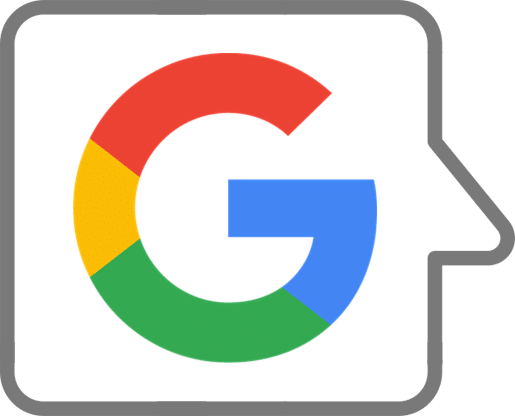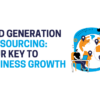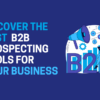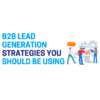Sales Funnel vs Marketing Funnel: Differences and Similarities Explained
If you want to start a sales funnel then there are a few things you need to do to make sure that you are getting the best result out of it. If you’d like to find out more then all you have to do is take a look below.
Understanding Sales Funnel vs Marketing Funnel
In today’s competitive landscape, businesses have to try and find new ways to attract and nurture leads. Two essential frameworks that can be used to do this include the sales funnel and the marketing funnel. Even though both terms are often used to describe funnels, you need to take note that they serve different purposes, especially when you look at the acquisition journey.
Differences: Marketing Funnel vs Sales Funnel
If you want to gain an insight into the differences between a marketing funnel and a sales funnel, then take a look below.
What is a Marketing Funnel?
A marketing funnel refers to the stages that a customer goes through, as they begin to become aware of your brand. It also covers the way they engage with your marketing content and decide whether or not to purchase from you. It’s more focused on generating awareness and it helps to nurture prospects at the top and the middle. When you look at a marketing funnel, you can break it down into different stages, including the top, middle and bottom.
The top of the funnel is where potential customers are becoming aware of your brand or your product. This is normally the widest, or broadest part of the funnel, where the main goal is to ultimately attract as many people as possible through different channels. This can include social media, search engine optimisation, PPC and content marketing. It may be that you also use blog posts, podcasts, infographics or videos to attract a wider audience.
Next, you have the middle of the funnel. When leads are aware of your brand, they may engage with you or they may want to be educated further. At this stage, a lot of prospects are starting to consider solutions to their issue and consider you as a good choice. Marketing efforts here will shift towards nurturing leads, as you will need to provide them with more information so you can build trust with them overall.
The decision part is at the bottom of the funnel. Prospects at this stage may be ready to make a decision. You need to provide them with compelling reasons to choose you over your competitors. This stage will revolve more around performing demos, offering a free trial or even arranging a consultation. Detailed product comparisons are also important. Marketing may also include special offers, or incentives to try and move people down the funnel.
What is a Sales Funnel?
With a sales funnel, you have a framework that focuses on converting the leads. There are numerous stages to this too. You have the lead generation step, which is where you will focus on identifying and capturing leads. You can do this through a lot of different means, whether it is through cold calls, referrals, inbound leads or even through automated marketing. You also have lead qualification. When you have a lead generated, the next step is for you to try and qualify it. This is such an important step as the sales team will assess whether or not the lead is a good fit for your service or product. Sales professionals will use a qualification framework here, to evaluate the leads which are most likely to convert.
After you have qualified a lead, the sales team will usually focus on showing the benefits of the service or product, and how it solves the pain points for the customers. It also helps to evaluate how likely they are to convert. At the final step, you have closure. This is where the focus shifts to closing the deal. Terms are negotiated and any concerns are addressed. When the lead has agreed to the terms, the sale is closed and the prospect is moved from the funnel to a customer.
Lead Funnel vs Sales Funnel: A Comprehensive Analysis
One thing to take note of is that a lead funnel will focus on attracting, nurturing and finally, qualifying leads. The goal is to move customers through the different stages of awareness and interest, with the ultimate goal being to convert them into engaged prospects who feel ready to enter the sales funnel. The key objective of a lead funnel is to try and generate interest, and capture leads at the top of the funnel. The leads can then be qualified, to find out if they are a good fit for your service or your product.
A sales funnel begins when the lead has been qualified, meaning the sales funnel comes after the lead funnel. It’s focused on converting a qualified lead into a potential paying customer. Some of the key objectives of a sales funnel include nurturing the lead, by building a relationship. At this point, any specific objectives are assessed. Sales teams will engage with qualified leads and they will make sure that the features and benefits are discussed properly. When the prospect is interesting, a demonstration or sales proposal will be made. Terms, pricing and final objections can then be discussed before the sale is closed. See how we approach lead generation and ensure qualified leads.
Sales vs Marketing Funnel: Which is More Effective?
The question about which option is more effective comes down to your specific goals. There’s no real right or wrong answer here. It largely comes down to the industry you are in and how the funnels align with your strategy.
With a sales funnel, you will find that this refers to the process that a potential customer goes through, from the initial awareness of your product to their final decision to make a purchase. This tends to be a lot more direct and it is focused on turning the leads you have into paying customers. Sales funnels are highly focused on converting leads, and they can be a way to influence revenue in a very short space of time. It can be too narrow if the lead generation process as a whole isn’t solid though.
The marketing funnel, which is also known as the buyer’s journey, is way broader and it encompasses every stage of the buying journey. From being aware of your brand to purchasing and beyond, the main focus comes down to nurturing the relationships that you have with your customers.
There are many pros to a marketing funnel, with the main focus being to build long-term relationships and to build trust with customers. This works very well for brand-building and it also works with inbound marketing and content strategies. It helps a lot with customer retention and it goes a long way when it comes to content marketing and brand-building. You may find that with this, it does take you longer to see the results you’re hoping for, as a lot of it comes down to building a good foundation first and then going from there.
Marketing vs Sales Funnel: Making the Right Choice
If you want to choose between a marketing funnel and a sales funnel then a lot of it depends on the stage of the customer journey you’re trying to address. With a marketing funnel, you will use this to attract, educate and finally nurture prospects. You should use your sales funnel to hone your leads when you have captured them through your marketing efforts. Sales teams should focus on qualifying leads and then addressing concerns. They should also focus on closing the deal as much as possible. At this stage, a lot of it comes down to personal interaction and negotiation. This helps to move the lead towards making a purchase.
If you want to optimise your funnel then you need to integrate both your marketing and sales efforts. There are a few strategies that you can use to make sure that both of your funnels are working together as they should be. Lead handoff ensures a transition between the marketing and sales team. You should also use marketing as a way to pass qualified leads to the sales team, but you do have to make sure that they are aware of where the buyer is within the journey. Develop a lead scoring system as this will help marketing teams and sales teams to agree on what determines a qualified lead and when the right time is to transition from marketing to sales. Neil Patel shares valuable tips on combining sales and marketing funnels. Using a CRM can be a good way for you to share data between your teams too. This helps you to track lead behaviour and it also helps you to guide sales and interactions.
Deciphering the Sales Funnel and Marketing Funnel Debate
There is a bit of a debate regarding sales funnels and marketing funnels. Both are interdependent and they are necessary if you want to get the best result out of the customer journey. The marketing funnel is more about building awareness and it is also about making sure that the right leads are attracted with engagement strategies. It’s a very broad process, but that’s the point. The aim is to try and reach as many people as possible, and to make sure that interest is sparked across a huge range of sectors. The aim is also to try and filter out any leads that may be unqualified. The sales funnel has the aim to focus on conversion. When you have a lead qualified, the sales team will then take over and guide the prospect through a range of interactions. They are also talked through any objections that they may have, which is so important.
Ultimately, you do need to make sure that you focus on your sales funnel and marketing funnel in conjunction with each other because if you don’t then you may find that you end up giving up one part of your business for the other. The marketing funnel should always feed into the sales funnel and it should also ensure that the lead process is warm and informed. If you can ensure that this is the case then you will surely benefit.
Lead, Sales, Marketing Funnel: A Comparative Study
Understanding the differences between a lead funnel, a sales funnel and a marketing funnel is so important if you want to optimise your strategy. Your lead funnel should focus on capturing and then qualifying your leads. The focus should be on identifying and engaging your customers, moving them from the awareness stage to the interest stage. A marketing funnel should drive awareness and it should also nurture your leads until they are sales-ready. Content marketing, SEO, email campaigns and social media outreach are all important here. The focus is to try and attract and educate prospects so they can move onto the consideration stage. If this is done well then they can then move to the final stage, which is the sales funnel.
During this stage, your sales team will take over and ensure that the customers are sold based on their needs.
The Battle: Sales Funnel vs Marketing Funnel
So as you can see, you shouldn’t be choosing one or the other. You should be trying to make sure that you look into them both so you can drive business growth as much as possible. Sales funnels are more for closing deals, but this would not be possible if you didn’t have a good marketing funnel. When you have both options working in tandem with each other then you will soon find that it is easier for you to not only get the result you want out of your business but for you to make sure that you are continually building a base of customers who are happy with your brand and who advocate for your products. Learning how to utilise both avenues is the key to success, so make sure that you integrate them into your strategy so you can rocket your potential.
See how The Lead Generation Company can help you integrate both strategies by visiting our Why Us page.

Ryan Whyte is a Director of The Lead Generation Company where he leads a team of B2B telemarketers to deliver high-quality leads for clients. With a strong background in campaign management and a focus on driving results, Ryan is dedicated to optimising strategies that maximise client success in B2B lead generation.



















